Spanish diaspora
| Total population | |
|---|---|
|
(Spanish nationals abroad 2,305,030 (of which 766,966 were born in Spain) 2016 estimates Total people with claimed Spanish ancestry c. 500 million) | |
| Regions with significant populations | |
| Number of Spanish citizens by country | |
| 439,236[2] | |
| 233,693[3] | |
| 188,025[3] | |
| 139,555[4] | |
| 100,622[2] | |
| 96,403[2] | |
| 94,617[2] | |
| 89,323[2] | |
| 86,626[2] | |
| 69,097[2] | |
| 60,046[2] | |
| 47,618[2] | |
| 44,468[2] | |
| 31,876[5] | |
| 27,000[6] | |
| 23,995[2] | |
| 20,128[2] | |
| 16,482[7] | |
| 15,390[8] | |
| 15,214[2] | |
| 12,375[7] | |
| 9,311[9] | |
| 8,000 | |
| 6,842 | |
| 6,794[10] | |
| 3,110[11] | |
| 2,500[12] | |
| 2,450[7] | |
| 1,826[13] | |
| 965[14] | |
| Languages | |
| Spanish languages (mainly Spanish, also Basque, Catalan, Galician, etc.), French, English, Portuguese, German, and others. | |
| Religion | |
| Predominantly Roman Catholicism | |
| Related ethnic groups | |
The Spanish diaspora consists of Spanish people and their descendants who emigrated from Spain. The diaspora is concentrated in places that were part of the Spanish Empire. Countries such as Mexico, the Philippines, Dominican Republic, Peru, Uruguay, Venezuela, Chile, Colombia, Argentina, Paraguay, Cuba, Nicaragua; and to a lesser extent, Brazil, the United States, Canada and continental Europe.
Origins (1402–1521)
Castile, under the reign of Henry III began the colonization of the Canary Islands in 1402, authorizing under feudal agreement to Norman noblemen Jean de Béthencourt. The conquest of the Canary Islands, inhabited by Guanche people, was only finished when the armies of the Crown of Castille won, in long and bloody wars, the islands of Gran Canaria (1478–1483), La Palma (1492–1493) and Tenerife (1494–1496).
The marriage of the Reyes Católicos (Ferdinand II of Aragon and Isabella I of Castile) created a confederation of reigns, each with their own administrations, but ruled by a common monarchy. According to Henry Kamen, it was only after centuries of a common rule that this separated realms formed a fully unificated state.
In 1492, Spain drove out the last Moorish king of Granada. After their victory, the Catholic monarchs negotiated with Christopher Columbus, a Genoese sailor attempting to reach Cipangu by sailing west. Castile was already engaged in a race of exploration with Portugal to reach the Far East by sea when Columbus made his bold proposal to Isabella. Columbus instead "inadvertently" discovered the Americas, inaugurating the Spanish colonization of the continent. The Indies were reserved for Castile.
Age of Discovery
After the Age of Discovery the Spanish were the earliest and one of the largest communities to emigrate out of Europe, and the Spanish Empire's expansion during the first half of the 16th century saw an "extraordinary dispersion of the Spanish people", with particular concentrations "in North and South America".
The Spanish Empire was "built on waves of migration overseas by Spanish people", who left Spain and "reached across the globe and permanently affected population structures in the American continent". As a result of the Spanish colonization of the Americas, what became the Latin America was "easily the greatest single destination of emigrant Spanish".
List of countries by population of Spanish heritage
| Country | Population | % of country | Reference | Criterion |
|---|---|---|---|---|
| | 25,000,000 | 60 | [15] | undefined |
| | 94,720,000 + | 80 + | [16][17] | estimated: 17% as White and 70-75% as mestizos. |
| | 8,500,000 | 52.7 | [18] | self-description |
| | 8,000,000–20,000,000 | 4.2–8 | [19][20] | |
| | 39,000,000 | 86 | [21] | 37% as white and 49% as mestizos. |
| | 10,050,849 | 88.9 | [22] | self-description as white, mulatto and mestizo |
| | 2,700,000 | 3.5 | self-description, 625,562 (0.2%) identified as Spaniard | |
| | 18,000,000 | 38 | [23] | self-description |
| | 8,507,511 | 75 | [24] | 55% of mestizos and 20% of whites |
| | 3,064,862 | 80.5 | [25][26] [27][28] [29][30] | self-description as white, 83,879 (2.1%) identified as Spaniard |
| | 2,389,841–3,500,000 | 0.8–1.1 | [30][31] | self-description, 625,562 (0.2%) identified as Spaniard |
| | 1,300,000 | 13 | [32] | White Spanish Descent. |
| | ~1,000,000 | ~30 | [33] | undefined |
| | 25,079,923 | 90.1 | [34] | 42.2% as white and 50% as mestizos. |
| Total in Diaspora | - | |||
| | 46,000,000 | 89 | [35] | undefined |
| Total Worldwide | - |
Africa
Conquest of the Canary Islands
The first period of the conquest of the Canaries was carried out by the Norman nobles Jean de Bethencourt and Gadifer de la Salle. Their motives were basically economic: Bethencourt possessed textile factories and dye works and the Canaries offered a source of dyes such as the orchil lichen. The treaty settled disputes between Castile and Portugal over the control of the Atlantic, in which Castilian control of the Canary islands was recognized but which also confirmed Portuguese possession of the Azores, Madeira, the Cape Verde islands and gave them rights to lands discovered and to be discovered...and any other island which might be found and conquered from the Canary islands beyond toward Guinea.
The Castilians continued to dominate the islands, but due to the topography and the resistance of the native Guanches, complete pacification was not achieved until 1495, when Tenerife and La Palma were finally subdued by Alonso Fernández de Lugo. After that, the Canaries were incorporated into the Kingdom of Castile.
The islands were conquered by mostly Andalusians and some Castilians at the beginnings of the 15th century. In 1402, they began to subdue the native Guanche population and the Guanches were initially enslaved and gradually absorbed by the Spanish colonizers.
After subsequent settlement by Spaniards and other European peoples, mainly Portuguese, the remaining Guanches were gradually diluted by the settlers and their culture largely vanished. Alonso Fernández de Lugo, conqueror of Tenerife and La Palma, oversaw extensive immigration to these islands during a short period from the late 1490s to the 1520s from mainland Europe, and immigrants included Galicians, Castilians, Portuguese, Italians, Catalans, Basques, and Flemings. At subsequent judicial enquiries, Fernández de Lugo was accused of favoring Genoese and Portuguese immigrants over Castilians.[36]
Equatorial Guinea 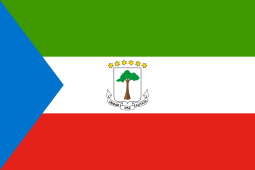
Americas
Argentina 
Spanish settlement in Argentina, that is the arrival of Spanish emigrants in Argentina, took place firstly in the period before Argentina's independence from Spain, and again in large numbers during the late 19th and early 20th centuries. Between the 15th and 19th centuries, the Spanish Empire was the sole colonial power in the territories that became Argentina after the 1816 Argentine declaration of independence. Thus, before 1816, a great part of the European settlers in Argentina were from Spain, and they carried the Spanish colonial administration, including religious affairs, government, and commercial business. A substantial Spanish-descended Criollo population gradually built up in the new cities, while some mixed with the indigenous populations (Mestizos), with the Black slave population (Mulattoes), or with other European immigrants. Since a great part of the immigrants to Argentina before the mid-19th century were of Spanish descent, and the fact that a significative part of the late-19th century/early-20th century immigrants to Argentina were Spaniards, the vast majority of Argentinians are of mostly Spanish ancestry. However this prevalence, and the numerous shared cultural aspects between Argentina and Spain (the Spanish language, Roman Catholicism, Criollo/Hispanic traditions), massive Immigration to Argentina at the turn of the 20th century involved a majority of non-Spanish peoples from all over Europe,
Brazil 
Spanish immigration was the third largest among immigrant groups in Brazil; about 750,000 immigrants entered Brazil from Spanish ports (a number smaller only than that of Argentina and Cuba after the independence of Latin American countreis).[37] Numbers of Spaniards coming to Brazil before independence are unknown, but they had a presence, particularly more significant during the Iberian Union period and in São Paulo state. During the dynastic union between Portugal and Spain (1580–1640), many Spaniards settled in Brazil, particularly in São Paulo. As a consequence, there is a large number of Brazilian descendants of these early settlers, especially since the early inhabitants of São Paulo explored and settled in other parts of Brazil. The descendants of Bartolomeu Bueno de Ribeira, born in Seville around 1555, who settled in São Paulo around 1583, marrying Maria Pires, are an example of it.[38] Afonso Taunay, in his book dealing with early São Paulo, São Paulo in the XVI century, mentions also Baltazar de Godoy, Francisco de Saavedra, Jusepe de Camargo, Martin Fernandes Tenório de Aguilar, Bartolomeu de Quadros, among others. In his genealogical account of the settling of São Paulo, Pedro Taques de Almeida Paes Leme, also mentions the three Rendon brothers, Juan Matheus Rendon, Francisco Rendon de Quebedo and Pedro Matheus Rendon Cabeza de Vaca, as well as Diogo Lara, form Zamora. Spaniards from Galicia also settled in Brazil during that time, like Jorge de Barros, for example.[39] The family names Bueno, Godoy, Lara, Saavedra, Camargo, etc., tracing back to these early settlers, are quite popular throughout Southeast Brazil, Southern Brazil and the Center-West. Silva Leme, in his work Genealogia Paulistana ("Paulistana Genealogy"), addresses several of these families.[40] Brazilian censuses do not research "ethnic origins" or ancestry, which makes it very difficult to give accurate numbers of Brazilians of Spanish descent. The only reliable research available is the 1998 July PME, the scope of which, however, is limited (it covers only six metropolitan regions), resulting in probably skewed results, as it includes the metropolitan regions of São Paulo, Rio de Janeiro, Porto Alegre, and Salvador, probably the most important concentrations of Brazilians of Spanish descent.[41] In the 1998 PME, Brazilians of Spanish descent were 4.4%[42] of the analysed populations. If the same proportion would be found in all territory, this would mean about 8,400,000 Brazilians of Spanish descent, but such extrapolation is problematic, and quite certainly results in an overestimate, due to the issues pointed above.
Chile 
The earliest European immigrants were Spanish colonisers who arrived in the 16th century. They came to form the majority of the population by the time of Chilean independence.[43] They came mainly from Castile and Andalusia and formed the majority population. In the 18th and 19th centuries, many Basques from both Spain and France came to Chile were they integrated into the existing elites of Castilian origin.[44][45][46][47][48][49][50][51] Other European nationalities then followed and also became rich and fused with each other and the Basque-Castilian elite to create modern Chilean culture. In the 20th century, there was an influx of refugees of the Spanish Civil War and Franco's regime.(see Winnipeg ship) They have kepted their Spanish national identity and set up Spanish clubs throughout the country. The Spanish culture of the original settlers slowly evolved into Chilean folk culture, especially the huaso one, and at the time of independence had abandoned national affiliation with Spain.
Colombia 
Spanish emigration to Colombia began in the early 16th century and continues to the present day. About 300,000 Spaniards emigrated to Colombia during the colonial period. There are currently over 27,000 Spanish immigrants in Colombia.
Cuba
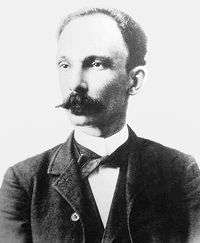
Spanish immigration to Cuba began in 1492, when Christopher Columbus first landed on the island, and continues to the present day. The first sighting of a Spanish boat approaching the island was on 28 October 1492, probably at Baracoa on the eastern point of the island. Christopher Columbus, on his first voyage to the Americas, sailed south from what is now The Bahamas to explore the northeast coast of Cuba and the northern coast of Hispaniola. Columbus discovered the island believing it to be a peninsula of the Asian mainland.[52][53] In 1511, Diego Velázquez de Cuéllar set out with three ships and an army of 300 men from Santo Domingo to form the first Spanish settlement in Cuba, with orders from Spain to conquer the island. Most heritage comes from Canarians, Asturians, Catalans, Galicians and Castilians. The native white population are nearly all descendants of the Spaniards.[54]
20th and 21st Century
Other results show that between 1902 and 1931, 780,400 (60.8%) were from Spain, 197,600 (15.4%) from Haiti, 115,600 (9.0%) from Jamaica and 190,300 (14.8%) other countries.[55]
In 2014, there were 108,858 with Spanish citizenship with only 2,114 born in Spain.[3][56]
Guatemala 
The arrival of the Spaniards in Guatemala began in 1524 with the conquest of the territory under the command of Pedro de Alvarado. After the conquest and the colonial era, more people came to the country not as conquerors, but to do business or daily activities.[57] The Spanish embassy in Guatemala City reports some 9,311 Spaniards living in Guatemala in 2014. Early European immigrants from Guatemala were Spaniards who conquered the indigenous Mayan population in 1524. They ruled for almost 300 years. Although the Spanish conquest of Guatemala was primarily the result of its technical superiority, the Spaniards were helped by the Mayans who were already involved in a bitter internal struggle. After a period of political instability exacerbated by the collapse of the world market for indigo, main exporter in the region of Europe, each province seceded from the federation, starting with Costa Rica. The federation collapsed between 1838 and 1840, when Guatemala became an independent nation.[58]
Mexico
Spanish immigration to Mexico began in 1519 and spans to the present day.[59] The first Spanish settlement was established in February 1519, as a result of the landing of Hernán Cortés in the Yucatan Peninsula, accompanied by about 11 ships, 500 men, 13 horses and a small number of cannons.[60] In March 1519, Cortés formally claimed the land for the Spanish crown, and the conquest of the Aztec Empire, a key event in the Spanish conquest of modern-day Mexico in general, was completed in 1521.
In the 16th century, following the military conquest of most of the new continent, perhaps 240,000 Spaniards entered American ports. They were joined by 450,000 in the next century.[61] Since the conquest of Mexico, this region became the principal destination of Spanish colonial settlers in the 16th century. The first Spaniards who arrived in Mexico were soldiers and sailors from Extremadura, Andalucía and La Mancha after the conquest of America.[62][63] At the end of the 16th century both commoner and aristocrat from Spain were migrating to Mexico.
Peru
The regions from which most Spanish immigrants originated were those of Extremadura, Castile, Galicia, Catalonia and Andalucía. Most of the colonial immigrants, in consequence, went from the southern regions of Spain to what now is considered the coastal Peruvian region. These immigrants generally departed from the ports of Cadiz or Sevilla and arrived in the ports of Callao, Mollendo and Pimentel. Many of these immigrants made a stopover in a Caribbean port before arriving in Peru. Before the development of the Panama Canal, ships went around Cape Horn to reach Peruvian ports. Although not many, a few travelers made their way from Europe to Peru via the Amazon River. These immigrants would seek passage on the many commercial ships going to retrieve rubber in Peru to bring back to Europe. These immigrants arrived at the river port of Iquitos. Almost all of them stayed there. These immigrants numbered no more than a few thousand. Around 44% of Peruvians are mestizos (people of mixed white and native Peruvian descent), more than 7% are mulattoes, making a total of 51% mixed segment,[64]
Puerto Rico
| ||||||
Spanish immigration to Puerto Rico began in 1493 (continuing to 1898 as a part of the Spanish Empire) and continues to the present day. On 25 September 1493, Christopher Columbus set sail on his second voyage with 17 ships and 1,200–1,500 men from Cádiz, Spain.[65] On 19 November 1493 he landed on the island, naming it San Juan Bautista in honor of Saint John the Baptist.
The first Spanish settlement, Caparra, was founded on 8 August 1508 by Juan Ponce de León, born in Valladolid, Spain, a lieutenant under Columbus, who later became the first governor of the island.[66]
From the start of the conquest of Puerto Rico, Castilians ruled over the religious (Roman Catholicism) and political life. Some came to the island for just a few years and then returned to Spain, however many stayed.
Puerto Rico's founding family were Castilians (Ponce de León family). Their home was built in 1521 by Ponce de León but he died in the same year, leaving "Casa Blanca" to his young son Luis Ponce de León. The original structure didn't last long; two years after its construction, a hurricane destroyed it, and it was rebuilt by Ponce de León's son-in-law Juan Garcia Troche. The southern city of Ponce is named after Juan Ponce de León y Loayza, the great-grandson of Juan Ponce de León.[67]
Immigration to the island caused the population to grow rapidly during the 19th century. In 1800 the population was 155,426 and ended the century with almost a million inhabitants (953,243), multiplying the population by about six times. The main component responsible was the Royal Decree of Graces of 1815 which led to immigrants from some 74 countries arriving. Included were hundreds of Corsican, French, Irish, German, Lebanese, Maltese and Portuguese families moving to the island. Some countries were represented by only a few (51 Chinese individuals for example). The country that still sent the most people was Spain.
From the start of colonization other groups from Catalonia, Asturias, Galicia, and Majorca had also immigrated, although the Canarian people formed the basis. Once the 19th century came, things changed drastically. According to Puerto Rican authors such as Cifre de Loubriel who researched the immigration wave patterns made to the island, during the 19th century the greatest number of Spaniards that came to the island with their families were Catalans and Mallorcans from the nearby Mediterranean regions.
The second most common Spanish region with the largest numbers were the Galicians and Asturians, and the third regions were Canary Islanders, Basques and Andalusians. The Catalans, Galicians, Majorcans and Asturians would come with whole families most of the time. There were regions of the island that attracted some immigrants more than others which was mainly for political or economic reasons.
United States
| Immigration to the United States[68] | |||||
|---|---|---|---|---|---|
| Years | Arrivals | Years | Arrivals | Years | Arrivals |
| 1820–1830 | 2,616 | 1891–1900 | 8,731 | 1961–1970 | 44,659 |
| 1831–1840 | 2,125 | 1901–1910 | 27,935 | 1971–1980 | 39,141 |
| 1841–1850 | 2,209 | 1911–1920 | 68,611 | 1981–1990 | 20,433 |
| 1851–1860 | 9,298 | 1921–1930 | 28,958 | 1991–2000 | 17,157 |
| 1861–1870 | 6,697 | 1931–1940 | 3,258 | 2001–2005 | 6,052 |
| 1871–1880 | 5,266 | 1941–1950 | 2,898 | ||
| 1881–1890 | 4,419 | 1951–1960 | 7,894 | ||
| Total number of arrivals (183 years): 305,797 | |||||
The Spanish are the longest-established European-American group with a continuous presence in Florida since 1565[69] and are the eighth-largest (choosing the term "Spaniard") Hispanic group in the United States of America. About 50.5 million Americans are of Latin American descent and therefore many having Spanish ancestry due to Spanish colonialism, although the term "Spanish-American" is used only to refer to Americans whose ancestry originates entirely or partially from Spain. They are found in large concentrations in five major states from 1940 through the early twenty-first century. In 1940, the highest concentration of Spaniards were in New York (primarily New York City), followed by California, Florida, New Jersey and Pennsylvania.
Immigration to the United States from Spain was minimal but steady during the first half of the nineteenth century, with an increase during the 1850s and 1860s resulting from the social disruption of the Carlist civil wars. Much larger numbers of Spanish immigrants entered the country in the first quarter of the twentieth century—27,000 in the first decade and 68,000 in the second—due to the same circumstances of rural poverty and urban congestion that led other Europeans to emigrate in that period, as well as unpopular wars. The Spanish presence in the United States declined sharply between 1930 and 1940 from a total of 110,000 to 85,000. Many immigrants moved either back to Spain or to another country.
| ||||||
Number of Spanish Americans
In the 2013 American Community Survey, 759,781 people that reported "Spaniard", 652,884 were native USA-born and 106,897 were foreign-born. 65.3% of the foreign-born were born in Europe, 25.1% were born in Latin america, 8.3% from Asia, 0.6% in Northern America, 0.5% in Africa and 0.1% in Oceania.[70]
2010 Census
The 2010 Census is the twenty-third and most recent United States national census. National Census Day, the reference day used for the census, was April 1, 2010.[71]
- Spaniard - 635,253[72]
Statistics for those who self-identify as ethnic Spaniard, Spanish, Spanish American in the 2010 American Community Survey.
Venezuela 
Spanish immigration to Venezuela began with the Spanish colonization of the Americas, and continued during Colonial Venezuela and, after independence in 1830, during the nineteenth century. Further immigration took place particularly following World War II.
Asia
Philippines 

A Spanish Filipino is any citizen or resident of the Philippines who is of Spanish or Hispanic ancestral origin. Spanish Filipinos trace part of their ancestry to Spain and Latin America and are mostly descendants of the migrants to the Spanish East Indies now known as the Philippines.
For three centuries (333 years), between 1565 and 1898, Mexicans, Spaniards, and Latin Americans sailed to and from the Spanish East Indies as government officials, soldiers, priests, settlers, traders, sailors and adventurers in the Manila-Acapulco Galleon, assisting Spain in its trade between Europe and Latin America (Spanish America); and Latin America and China.
According to an 1818 study by the renowned German ethnologist Fëdor Jagor, "The Former Philippines thru Foreign Eyes", about "1/3rd of the inhabitants of the island of Luzon were mixed with varying degrees of Spanish ancestry and that the vast majority of military personnel have Latin-American origins."[74]
Using data based on Fëdor Jagor's study, it is estimated that Filipinos with at least some Spanish or Hispanic ancestry comprise roughly +/-33.33% of the current Philippine population.
Europe
France 

French of Spanish descent is any citizen or resident of France who is of Spanish ancestral origin. Famous Spaniards in France: Louis de Funès, Eric Cantona, Anne Hidalgo, Diego Buñuel, Luis Fernández, Jean Reno, Olivier Martinez, Paco Rabanne, Mathieu Valbuena, Manuel Amoros, Raymond Domenech, Albert Camus, Manuel Valls.
Germany 
Germans of Spanish descent is any citizen or resident of Germany who is of Spanish ancestral origin. Between 1960-1973 up to 600,000 Spaniards emigrated to Germany.[75] Famous Spaniards in Germany: Mario Gomez, Heinz Harald Frentzen, Gonzalo Castro, Francisco Copado, Curro Torres, Enrique Sánchez Lansch, Eduardo Garcia, company Garmo AG, Joachim Llambi, Marc Gallego, Stefan Ortega, Joselu, Daniel Brühl, Oscar Corrochano, Cristian Fiel, Oscar Ortega Sánchez.
Switzerland 
Swiss of Spanish descent is any citizen or resident of Switzerland who is of Spanish ancestral origin. Famous Spaniards in Siwtzerland: Ricardo Cabanas, Ricardo Rodríguez, Philippe Senderos, Luis Cembranos, Gerardo Seoane, Riccardo Meili, Raphael Diaz, Vincent Perez.
United Kingdom 
British of Spanish descent is any citizen or resident of the United Kingdom who is of Spanish ancestral origin. Famous Spaniards in the United Kingdom: John Galliano, Patrick Murray, Geri Halliwell, John Garcia Thompson, Roland Orzabal, Michael Portillo, Lita Roza, Mary I, Edward II, Jay Rodriguez.
Oceania
Australia 
There are approximately 78,271 Australians of Spanish descent, most of which reside within the major cities of Sydney and Melbourne, with lesser numbers in Brisbane and Perth. Of these, according to the 2006 Australian census, 12,276 were born in Spain.[76]
References
- ↑ El País, 17 March 2016. (In Spanish)
- 1 2 3 4 5 6 7 8 9 10 11 12 13 Explotación estadística del Padrón de Españoles Residentes en el Extranjero a 1 de enero de 2012
- 1 2 3 "Explotación estadística del Padrón de Españoles Residentes en el Extranjero a 1 de enero de 2015" (PDF). Retrieved 2016-09-02.
- ↑ "Anzahl der Ausländer in Deutschland nach Herkunftsland (Stand: 31. Dezember 2014)".
- ↑ "El Ecuador es un destino apetecido para españoles que buscan empleo".
- ↑ "Las razones del presidente Rajoy para no exigirles visa a colombianos".
- 1 2 3 Censo electoral de españoles residentes en el extranjero 2009
- ↑ "Födelseland Och Ursprungsland".
- ↑ "Embassy of Spain in Guatemala City, Guatemala profile. Guatemala" (PDF). http://www.exteriores.gob.es/embajadas/guatemala/es/Paginas/inicio.aspx (in Spanish). http://www.exteriores.gob.es/embajadas/guatemala/es/Paginas/inicio.aspx. Retrieved 17 April 2015. External link in
|website=, |publisher=(help) - ↑ "CSO Emigration" (PDF). Census Office Ireland. Retrieved January 29, 2013.
- ↑ There are 3,110 immigrants from Spain according to INE, 2012-01-01
- ↑ Qatar´s population by nationality - bq magazine, 2014
- ↑ "Embassy of Spain in Managua, Nicaragua profil e Nicaragua" (PDF). http://www.exteriores.gob.es/embajadas/nicaragua/es /Paginas/inicio.aspx (in Spanish). http://www.exteriores.gob.es/embajadas/nicaragua/es/Paginas/inicio.aspx. Retrieved 17 April 2015. External link in
|website=, |publisher=(help) - ↑ State statistics committee of Ukraine - National composition of population, 2001 census (Ukrainian)
- ↑ Argentina- 25 million (according to article: Spanish Argentine) (26/03/2012)
- ↑ Article, White Mexican, claims and cites figures that indicate that most White Mexicans make up ~17% of Mexico's population (of ~118 million) and that most White Mexicans are of Spanish descent.
- ↑ "Mexico – Britannica Online Encyclopedia". Britannica.com. Retrieved 10 July 2010.
- ↑ Article, Demographics of Chile, claims that most Chileans are of Spanish or Italian descent; assuming at least half of the country's 16 million mostly White people are primarily of Spanish descent, then 8 million people should be Spanish)
- ↑ Embassy's Country Note on Brazil mentioning that 20 million Brazilians are of Spanish descent (see also: Spanish Brazilian)
- ↑ www.schwartzman.org.br
- ↑ Article, Colombia, claims as of 3/05/2013 that 37% of Colombians are White and that most of them are primarily of Spanish descent.
- ↑ "Census of population and homes" (in Spanish). Government of Cuba. 16 September 2002. Retrieved 7 September 2009.
- ↑ Article, Spanish Peruvian article claims this as of March 26, 2012.
- ↑ "Caracterización estadística República de Guatemala 2012" (PDF) (in Spanish). INE. Archived from the original on November 2012. Retrieved 2015-04-17.
- ↑ Profile of General Demographic Characteristics: 2000, Data Set: Census 2000 Summary File 1 (SF 1) 100-Percent Data
- ↑ Puerto Rico's History on race
- ↑ page 6, Puerto Rican ancestry
- ↑ Puerto Rican identity
- ↑ 2010 Census Interactive Population Search: Puerto Rico. Retrieved 16 December 2011.
- 1 2 2010 Census Interactive Population Search: Puerto Rico. - assuming this applies to Puerto Rican Diaspora in United States of 4.6 million, 3-4 million should be White, and most of those should be Spanish based on history of European immigration to Puerto Rico - Retrieved 16 December 2011.
- 1 2 3 U.S. Census Bureau, Spaniard, 2008 American Community Survey
- ↑ Bolivia- 1.3 million (according to article: Spanish Bolivian) (26/03/2012)
- ↑ Article claims that Uruguayans are mostly of Spanish and Italian descent; assuming that at least 1/3 of 3.3 million population is of Spanish descent, there should be at least 1 million Spanish people in the country (26/03/2012).
- ↑ Article, Venezuelan People, claims as of 3/05/2013 that 42.2% of Venezuelans are White and that most of them are primarily of Spanish descent.
- ↑ Population of "Official Population Figures of Spain. Population on the 1 April 2010". Instituto Nacional de Estadística de España. Retrieved 5 July 2010. 46,030,109 resident figure
- ↑ History of La Palma
- ↑ Entrada de estrangeiros no Brasil
- ↑ GeneAll.net Bartolomeu Bueno de Ribeira
- ↑ http://www.projetocompartilhar.org/SAESPp/jorgedebarros1615.htm
- ↑ http://buratto.org/paulistana/
- ↑ Elda Evangelina Gonzáles Martínez. O Brasil como país de destino para os migrantes espanhóis. In Boris Fausto. Fazer a América: a imigração em massa para a América Latina. p. 248-251.
- ↑ Simon Schwartzman. Fora de foco: diversidade e identidade étnicas no Brasil. Quadro 2, p. 7.
- ↑ Vascos en Chile.
- ↑ Diario vasco.
- ↑ Enterview to the president of the Basque parliament.
- ↑ Chilean Basques. Ainara Madariaga (writer). "Imaginarios vascos desde Chile la construcción de imaginarios vascos en Chile durante el siglo XX".
- ↑ Basques in Chile.
- ↑ Contacto Interlingüístico e intercultural en el mundo hispano. Instituto valenciano de lenguas y culturas. Universitat de València. Cite:"Un 20% de la población chilena tiene su origen en el País Vasco".
- ↑ Basque entrepreneurs. La población chilena con ascendencia vasca bordea entre el 15% y el 20% del total, por lo que es uno de los países con mayor presencia de emigrantes venidos de Euskadi.(Spanish)
- ↑ El 27% de los chilenos son descendientes de emigrantes vascos. From Oñati and Elorza family. Waldo Ayarza Elorza. (Spanish)
- ↑ Presencia vasca en Chile. (Spanish)
- ↑ Carla Rahn Phillips (1993). The Worlds of Christopher Columbus (reprint, illustrated ed.). Cambridge University Press. p. 205. ISBN 978-0-521-44652-5.
- ↑ Thomas Suarez (1999). Early Mapping of Southeast Asia. Tuttle Publishing. p. 109. ISBN 978-962-593-470-9.
- ↑ Spanish Emigration to Cuba
- ↑ Fazer a América: a imigração em massa para a América Latina By Boris Fausto
- ↑ "Padrón de Españoles Residentes en el Extranjero (PERE)" (PDF). Retrieved 5 December 2015.
- ↑ Minster, Christopher. "The Maya: Conquest of the K'iche by Pedro de Alvarado". About (Education) (in Spanish). Retrieved 2015-04-11.
- ↑ Smith, James. "Guatemala: Economic Migrants Replace Political Refugees". MPI. Retrieved 2015-04-11.
- ↑ Encyclopedia Britannica - Mexico: Ethnic Groups
- ↑ Bernard Grunberg, "La folle aventure d'Hernan Cortés", in L'Histoire n°322, July–August 2007
- ↑ Axtell, James (September–October 1991). "The Columbian Mosaic in Colonial America". Humanities. 12 (5): 12–18. Archived from the original on May 17, 2008. Retrieved 2008-10-08.
- ↑ http://www.emperadores.es/circuitos/tierra-de-conquistadores
- ↑ http://www.allspainaccommodation.com/extremadura/extremadura.htm
- ↑ (Spanish) / Etnografía del Perú
- ↑ "The second voyage of Columbus". World Book, Inc. Retrieved 11 February 2006.
- ↑ Vicente Yáñez Pinzón is considered the first appointed governor of Puerto Rico, but he never arrived on the island.
- ↑ Founding and History of Ponce
- ↑ Encyclopedia of North American Immigration By John Powell
- ↑ "A Spanish Expedition Established St. Augustine in Florida". Library of Congress. Retrieved 2012-06-29.
- ↑ Spaniard: POPULATION PROFILE IN THE UNITED STATES - 2013 American Community Survey 1-Year Estimates
- ↑ "Interactive Timeline". About the 2010 Census. U.S. Census Bureau. 2011. Retrieved June 17, 2011.
- ↑
- 1 2 3 Source: U.S. Census Bureau, 2010 American Community Survey
- ↑ Jagor, Fedor; et al. (2007). "Part VI People and Prospects of the Philippines". The Former Philippines Through Foreign Eyes. Echo Library. ISBN 978-1-4068-1542-9.
- ↑ 50 Jahre spanische Einwanderung in der BRD, http://hsozkult.geschichte.hu-berlin.de/tagungsberichte/id=3471
- ↑ Australia ancestry 2006.
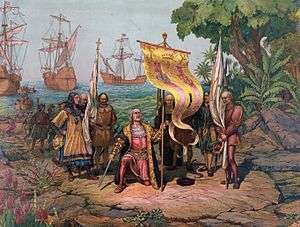


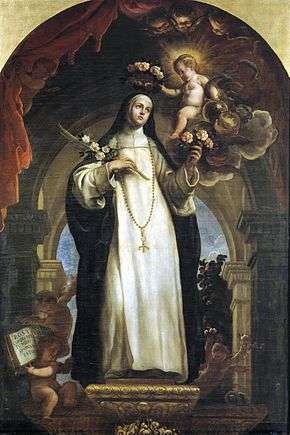
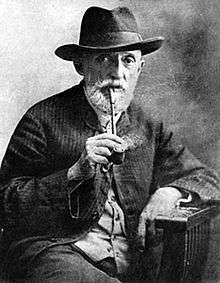
.jpg)
.jpg)
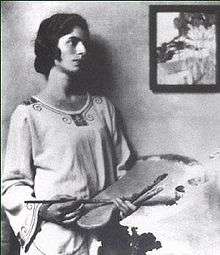
.jpg)
